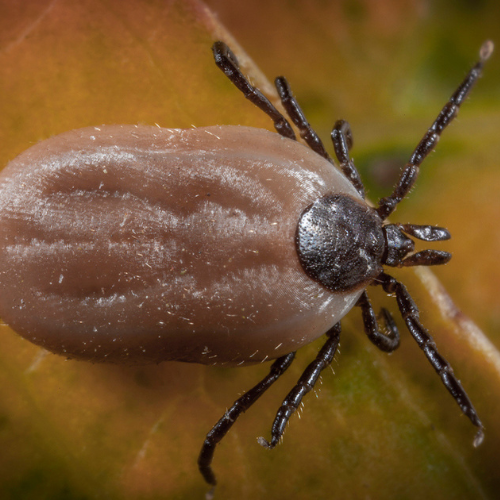Brown Dog Tick

Proud Supporter of Disabled Veterans
No Contracts
Services provided without written contracts.
Introduction to
The brown dog tick, scientifically known as Rhipicephalus sanguineus, is a common tick species found worldwide. Unlike other ticks that prefer specific environments, brown dog ticks can thrive both indoors and outdoors, making them a unique and persistent pest. They are known to infest homes and kennels, posing a risk to dogs and occasionally humans. Understanding how to identify, prevent, and professionally manage brown dog ticks is crucial for protecting pets and households from their bites and potential disease transmission. This article explores the recognition, biology, habits, prevention, and professional handling of brown dog ticks.
Recognition
Brown dog ticks are small, reddish-brown ticks, with adults measuring about 3 to 5 millimeters in length before feeding. They are distinguished by their narrow, elongated bodies and uniform color. Unlike some other tick species, brown dog ticks lack the ornate markings on their backs. Females can swell significantly after feeding, becoming grayish-blue and reaching up to 12 millimeters in length. The larvae and nymphs are smaller and more difficult to spot but share the same basic body shape and coloration. Identification is often confirmed by finding them on dogs or in areas where dogs rest.
Biology
Brown dog ticks have a three-host life cycle: egg, larva, nymph, and adult. Each stage requires a blood meal to progress to the next. Females lay up to 5,000 eggs in cracks and crevices around kennels, homes, and other sheltered areas. These eggs hatch into six-legged larvae, which seek out a host (typically a dog) for their first blood meal. After feeding, the larvae drop off, molt into nymphs, and repeat the process. Nymphs then molt into adults after another blood meal. The entire life cycle can be completed in as little as two months under ideal conditions, but it can extend to over a year if conditions are not favorable.
Habits
Brown dog ticks are unique in their ability to survive and reproduce indoors, making them a year-round pest. They prefer warm, dry environments and are often found in kennels, homes, and dog shelters. These ticks are most active in areas where dogs are present, such as bedding, carpeting, and furniture. While they primarily feed on dogs, they can also bite humans, although this is less common. Brown dog ticks are known for their ability to climb walls and hide in cracks and crevices, making them difficult to control once they infest a home. They are also capable of surviving without a host for several months.
Prevention
Preventing brown dog tick infestations involves a combination of regular pet care and home maintenance. Use tick preventatives on pets as recommended by a veterinarian, including tick collars, topical treatments, and oral medications. Regularly inspect and groom pets to remove any ticks before they can become established. Keep living areas clean and vacuum regularly, paying special attention to areas where pets rest. Wash pet bedding frequently in hot water to kill any ticks or eggs. Seal cracks and crevices in walls and floors to eliminate hiding places. Limit pets’ exposure to tick-prone areas, such as tall grass and wooded areas, especially during peak tick seasons.
Professional
If brown dog ticks have infested your home or kennel, professional pest control services are essential for effective management. STL Pest Control offers comprehensive treatment plans to eliminate brown dog tick infestations. Their experienced technicians will conduct a thorough inspection to identify all infested areas and apply targeted treatments using environmentally friendly insecticides. They also provide advice on long-term prevention strategies, such as regular pet treatments and home maintenance practices, to keep your property tick-free. Professional intervention ensures that tick problems are resolved quickly and effectively, protecting your pets and home from further infestation and potential disease transmission.



Our Office







